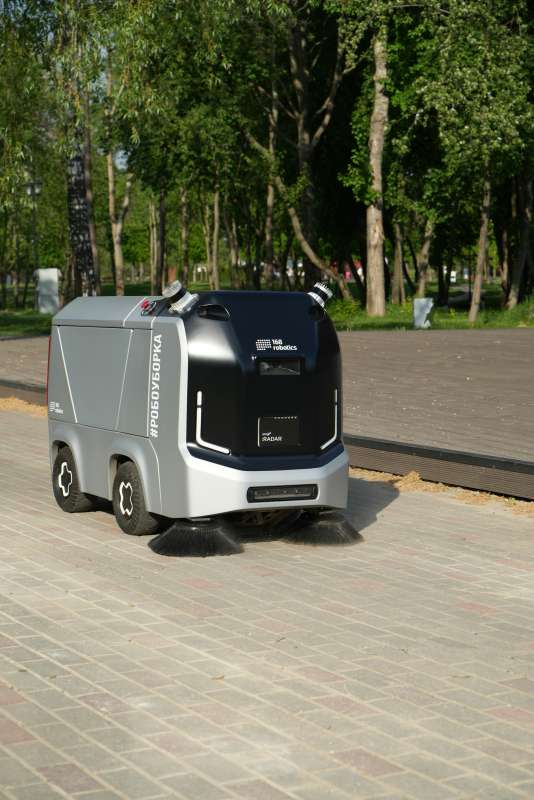Robotic Delivery Systems: The Future of Urban Logistics
Published on: May 11, 2025
Robotic Delivery Systems: Transforming Urban Logistics
Robotic delivery systems are rapidly reshaping the landscape of urban logistics, providing innovative solutions to some of the most pressing challenges faced by modern cities. As the global population continues to urbanize, the demand for efficient, reliable, and sustainable delivery services has grown exponentially. The integration of autonomous vehicles, delivery robots, and drones into the urban delivery ecosystem is not only revolutionizing the way goods are transported but also influencing urban planning, environmental sustainability, and consumer behavior.
The Evolution of Urban Delivery Systems
The traditional model of urban delivery has long relied on human-driven vehicles, ranging from delivery vans and trucks to bicycles and motorcycles. While these methods have served cities for decades, they have also contributed to significant traffic congestion, air pollution, and logistical inefficiencies. The rise of e-commerce and on-demand delivery services has further exacerbated these challenges, placing additional strain on urban infrastructure.
In response, technology companies, logistics providers, and urban planners have turned to robotics and automation as a means of optimizing last-mile delivery—the final leg of the supply chain that brings goods directly to consumers. The last-mile is often the most expensive and complex segment of the delivery process, accounting for up to 53% of total shipping costs in some cases. Robotic delivery systems aim to address these inefficiencies by leveraging advanced technologies such as artificial intelligence, machine learning, computer vision, and sensor fusion to enable safe, efficient, and autonomous operation in dynamic urban environments.
Types of Robotic Delivery Systems
- Autonomous Ground Vehicles (AGVs): These include self-driving cars, vans, and small delivery robots that operate on sidewalks or roads. AGVs use a combination of sensors, cameras, lidar, and GPS to navigate complex urban landscapes, avoid obstacles, and interact with pedestrians and other vehicles. Companies like Nuro, Starship Technologies, and Amazon have deployed AGVs in various cities worldwide, delivering groceries, parcels, and restaurant meals.
- Delivery Drones: Unmanned aerial vehicles (UAVs) or drones are increasingly being used for rapid delivery of lightweight packages, especially in areas with heavy traffic or limited road access. Drones can bypass ground-level congestion, delivering goods in a fraction of the time required by traditional vehicles. Major players such as Wing (a subsidiary of Alphabet), Amazon Prime Air, and UPS Flight Forward have conducted successful pilot projects and are expanding their drone delivery networks.
- Hybrid Systems: Some solutions combine ground-based robots with aerial drones to optimize delivery routes and maximize efficiency. For example, a delivery van may serve as a mobile hub, releasing drones or robots to complete the last segment of the journey to customers’ doorsteps.
Key Technologies Powering Robotic Delivery
The success of robotic delivery systems hinges on a suite of advanced technologies that enable autonomous navigation, real-time communication, and seamless integration with existing logistics networks. These include:
- Artificial Intelligence (AI) and Machine Learning: AI algorithms process vast amounts of data from sensors and cameras, allowing robots and vehicles to recognize objects, predict pedestrian movements, and make split-second decisions.
- Sensor Fusion: Combining data from lidar, radar, ultrasonic sensors, and GPS enables precise localization and obstacle avoidance, even in challenging weather or lighting conditions.
- Edge Computing and Cloud Connectivity: Real-time data processing at the edge ensures quick response times, while cloud connectivity facilitates fleet management, route optimization, and remote monitoring.
- Computer Vision: Advanced image recognition systems help robots interpret their surroundings, identify delivery locations, and interact with humans safely and intuitively.
Benefits of Robotic Delivery Systems
- Reduced Traffic Congestion: By utilizing smaller vehicles and drones, robotic delivery systems can decrease the number of large trucks on the road, easing congestion in densely populated urban areas.
- Lower Emissions and Environmental Impact: Many robotic delivery vehicles are electric-powered, contributing to cleaner air and reduced greenhouse gas emissions. Drones, in particular, have a minimal carbon footprint compared to traditional delivery trucks.
- Cost Efficiency: Automation reduces labor costs and can lower operational expenses for logistics providers, making delivery services more affordable for businesses and consumers.
- Improved Delivery Speed and Reliability: Robots and drones can operate around the clock, delivering goods quickly and consistently, even during peak hours or adverse weather conditions.
- Enhanced Accessibility: Robotic delivery systems can reach areas that are difficult for traditional vehicles, such as narrow streets, gated communities, or remote locations, expanding access to goods and services.
Challenges and Considerations
Despite their many advantages, robotic delivery systems also face significant challenges that must be addressed to ensure widespread adoption and long-term success. These include:
- Regulatory Hurdles: The deployment of autonomous vehicles and drones in public spaces is subject to complex regulations that vary by country, state, and city. Issues such as airspace management, safety standards, and privacy concerns require ongoing collaboration between industry stakeholders and government authorities.
- Technical Limitations: Navigating unpredictable urban environments remains a major technical challenge. Robots must be able to handle obstacles, interact with pedestrians, and adapt to changing conditions in real time.
- Public Acceptance: The introduction of robots and drones into public spaces raises questions about safety, noise, and privacy. Building trust and ensuring positive user experiences are critical to gaining public acceptance.
- Security and Vandalism: Protecting autonomous delivery vehicles from theft, tampering, or vandalism is an ongoing concern, especially in high-crime areas.
- Integration with Existing Infrastructure: Seamlessly incorporating robotic delivery systems into current logistics networks, urban layouts, and building designs requires careful planning and investment.
Global Examples and Real-World Deployments
Across the globe, cities are experimenting with and deploying robotic delivery systems to meet the growing demand for efficient urban logistics. Notable examples include:
- United States: In Houston, Texas, Nuro’s autonomous delivery vehicles have been delivering groceries and prescriptions since 2020. In Washington, D.C., Starship Technologies’ sidewalk robots are a common sight, delivering food and parcels to residents and students.
- United Kingdom: Milton Keynes has become a hub for robotic delivery, with Starship Technologies operating a fleet of over 100 robots that have completed more than 2 million deliveries as of 2023.
- China: Companies like JD.com and Meituan have deployed delivery robots and drones in several cities, particularly during the COVID-19 pandemic, to minimize human contact and maintain essential supply chains.
- Australia: Alphabet’s Wing has launched drone delivery services in Canberra and Logan, delivering food, medicine, and household items to thousands of homes.
- Estonia: As the home of Starship Technologies, Estonia has embraced robotic delivery, with robots integrated into daily life in cities like Tallinn and Tartu.
Impact on Businesses and Consumers
The adoption of robotic delivery systems is opening up new opportunities for businesses and consumers alike. For retailers and e-commerce companies, automation enables faster order fulfillment, reduced delivery costs, and the ability to offer innovative services such as contactless delivery or real-time tracking. Restaurants and grocery stores can expand their reach, serving more customers without the need for additional staff or vehicles.
For consumers, robotic delivery offers unprecedented convenience and flexibility. Orders can be placed and received at any time, with precise delivery windows and real-time updates. The contactless nature of robotic delivery has become especially valuable in the wake of the COVID-19 pandemic, reducing the risk of virus transmission and supporting public health efforts.
Environmental and Social Implications
Robotic delivery systems have the potential to significantly reduce the environmental impact of urban logistics. By replacing large, fossil fuel-powered delivery trucks with electric robots and drones, cities can lower their carbon emissions and improve air quality. The quieter operation of electric vehicles also helps reduce noise pollution, contributing to a more pleasant urban environment.
From a social perspective, the widespread adoption of robotic delivery raises important questions about employment and workforce transformation. While automation can displace certain jobs, it also creates new opportunities in fields such as robotics maintenance, fleet management, software development, and urban planning. Policymakers and industry leaders must work together to ensure a just transition for workers affected by these technological shifts.
Future Trends and Innovations
The future of robotic delivery systems is marked by rapid innovation and ongoing experimentation. Key trends shaping the evolution of urban logistics include:
- Increased Autonomy: Advances in AI and machine learning are enabling higher levels of autonomy, allowing robots and vehicles to operate with minimal human intervention in increasingly complex environments.
- Swarm Robotics: Coordinated fleets of robots and drones can work together to optimize delivery routes, share information, and respond dynamically to changes in demand or traffic conditions.
- Smart Infrastructure: Cities are investing in smart infrastructure such as dedicated robot lanes, charging stations, and secure drop-off points to support the safe and efficient operation of robotic delivery systems.
- Personalized Delivery Services: The integration of customer preferences, smart home technology, and real-time data enables highly personalized delivery experiences, from scheduled drop-offs to temperature-controlled compartments for perishable goods.
- Cross-Industry Collaboration: Partnerships between technology companies, logistics providers, retailers, and municipal governments are driving the development and deployment of scalable robotic delivery solutions.
Ethical and Legal Considerations
The rise of robotic delivery systems brings with it a host of ethical and legal considerations. Ensuring data privacy and cybersecurity is paramount, as autonomous vehicles and drones collect and transmit sensitive information about their surroundings and customers. Establishing clear liability frameworks for accidents or malfunctions is another critical area, as is addressing potential biases in AI algorithms that could affect service accessibility or safety.
Equitable access to robotic delivery services is also a key concern, particularly for underserved communities or individuals with disabilities. Policymakers must ensure that the benefits of automation are distributed fairly and that new technologies do not exacerbate existing inequalities in urban mobility or access to essential goods.
Urban Planning and the Smart City Paradigm
The integration of robotic delivery systems is closely linked to the broader concept of the smart city, where digital technologies are harnessed to improve the efficiency, sustainability, and livability of urban environments. Urban planners are rethinking the design of streets, sidewalks, and public spaces to accommodate autonomous vehicles and robots, while also considering the implications for traffic flow, safety, and accessibility.
Smart city initiatives often include the deployment of sensors, IoT devices, and data analytics platforms to monitor and optimize the movement of goods and people. By leveraging these technologies, cities can create more resilient and adaptive logistics networks that respond to real-time demand and minimize environmental impact.
Looking Ahead: The Road to Widespread Adoption
While significant progress has been made in the development and deployment of robotic delivery systems, widespread adoption will require continued investment, innovation, and collaboration among stakeholders. Addressing regulatory, technical, and social challenges is essential to unlocking the full potential of these technologies and ensuring that urban logistics systems are prepared to meet the needs of rapidly growing cities.
As robotic delivery systems become increasingly integrated into daily life, they promise to transform not only how goods are delivered but also how cities function, how businesses operate, and how individuals access the products and services they need. The journey toward fully autonomous urban logistics is well underway, with each new deployment bringing us closer to a future where robotic delivery is a seamless, sustainable, and indispensable part of the urban experience.










